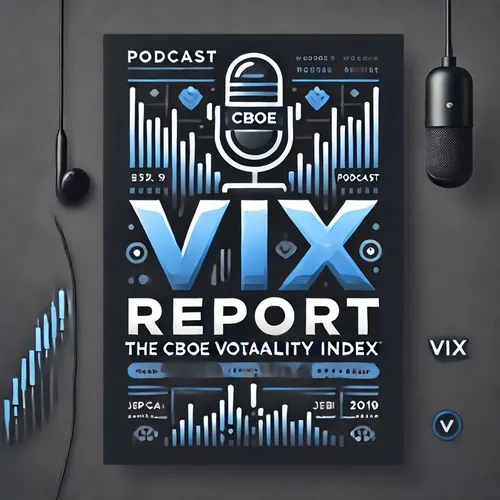"Volatility Eases as VIX Drops to 21.90, Signaling Market Confidence"
- Author
- QP-1
- Published
- Tue 13 May 2025
- Episode Link
- https://www.spreaker.com/episode/volatility-eases-as-vix-drops-to-21-90-signaling-market-confidence--66068609
The Cboe Volatility Index (VIX), widely known as the "fear index," reflects the market's expectations of future volatility, and its recent performance offers insights into the current sentiment on Wall Street. As of May 9, 2025, the VIX closed at 21.90, a marked decrease from its position just a day earlier, where it stood at 22.48 on May 8. This reduction translates to an approximate 2.59% decline in the index over a single trading session. Such a shift in the VIX suggests that market participants are currently anticipating a period of lower volatility.
To understand the significance of these numbers, it's crucial to comprehend what a declining VIX indicates. Typically, a lower VIX corresponds with more stable or positive movements in the broader equities market, such as the S&P 500. In other words, when investors expect less dramatic swings in stock prices, the VIX tends to decrease. This recent drop to 21.90 marks a continuation of a downward trend observed over the preceding week: the VIX was at 24.76 on May 6, then moved to 23.55 on May 7, subsequently falling to 22.48 on May 8.
Various underlying factors could be contributing to this observed decrease in the VIX. Market stability is a key driver; a rising or stable equities market often correlates with reduced volatility expectations. Positive developments in economic indicators, such as employment rates or GDP growth, may also bolster confidence amongst investors, leading to subdued VIX levels. Additionally, geopolitical stability, when perceived risks on this front decrease, can alleviate market anxieties.
Investor activity itself plays a crucial role. Shifting hedging strategies, including reduced demand for protective options, can exert downward pressure on the VIX. When market participants are less inclined to seek insurance against adverse equity movements, it reflects diminished apprehension about potential market upheavals.
Despite the recent downward trend, the dynamic nature of the VIX means that it remains susceptible to rapid fluctuations based on new information or shifts in market sentiment. While the current data indicates a period of lower volatility expectations, this scenario can quickly evolve with changing economic conditions or unforeseen geopolitical developments.
Thus, while investors should be encouraged by the current trend signaling reduced volatility, they should also remain vigilant. Monitoring economic indicators, staying updated on geopolitical situations, and keeping abreast of corporate earnings reports will be essential in navigating the ongoing investment climate.
In summary
